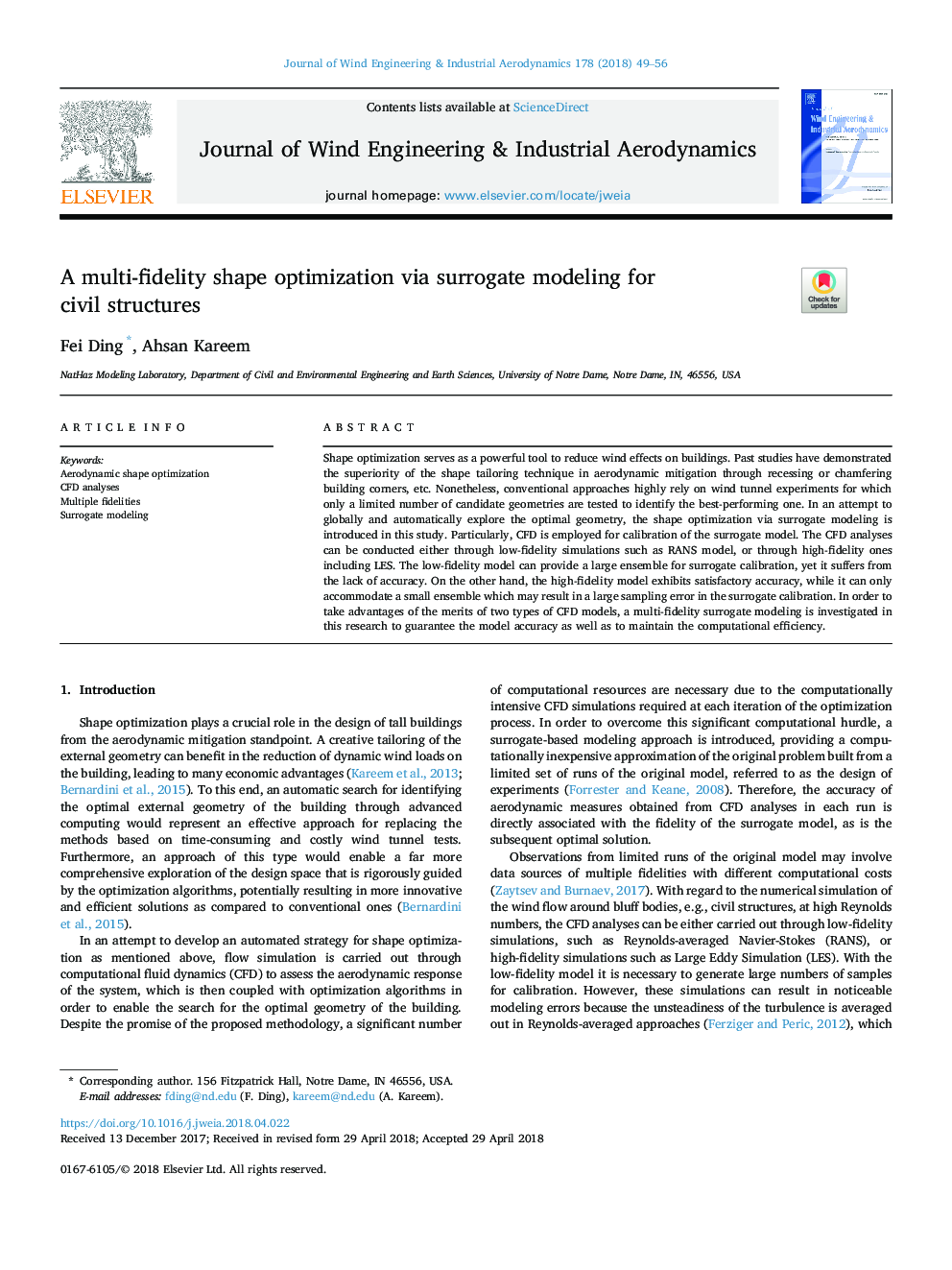| Article ID | Journal | Published Year | Pages | File Type |
|---|---|---|---|---|
| 6756852 | Journal of Wind Engineering and Industrial Aerodynamics | 2018 | 8 Pages |
Abstract
Shape optimization serves as a powerful tool to reduce wind effects on buildings. Past studies have demonstrated the superiority of the shape tailoring technique in aerodynamic mitigation through recessing or chamfering building corners, etc. Nonetheless, conventional approaches highly rely on wind tunnel experiments for which only a limited number of candidate geometries are tested to identify the best-performing one. In an attempt to globally and automatically explore the optimal geometry, the shape optimization via surrogate modeling is introduced in this study. Particularly, CFD is employed for calibration of the surrogate model. The CFD analyses can be conducted either through low-fidelity simulations such as RANS model, or through high-fidelity ones including LES. The low-fidelity model can provide a large ensemble for surrogate calibration, yet it suffers from the lack of accuracy. On the other hand, the high-fidelity model exhibits satisfactory accuracy, while it can only accommodate a small ensemble which may result in a large sampling error in the surrogate calibration. In order to take advantages of the merits of two types of CFD models, a multi-fidelity surrogate modeling is investigated in this research to guarantee the model accuracy as well as to maintain the computational efficiency.
Related Topics
Physical Sciences and Engineering
Energy
Renewable Energy, Sustainability and the Environment
Authors
Fei Ding, Ahsan Kareem,
